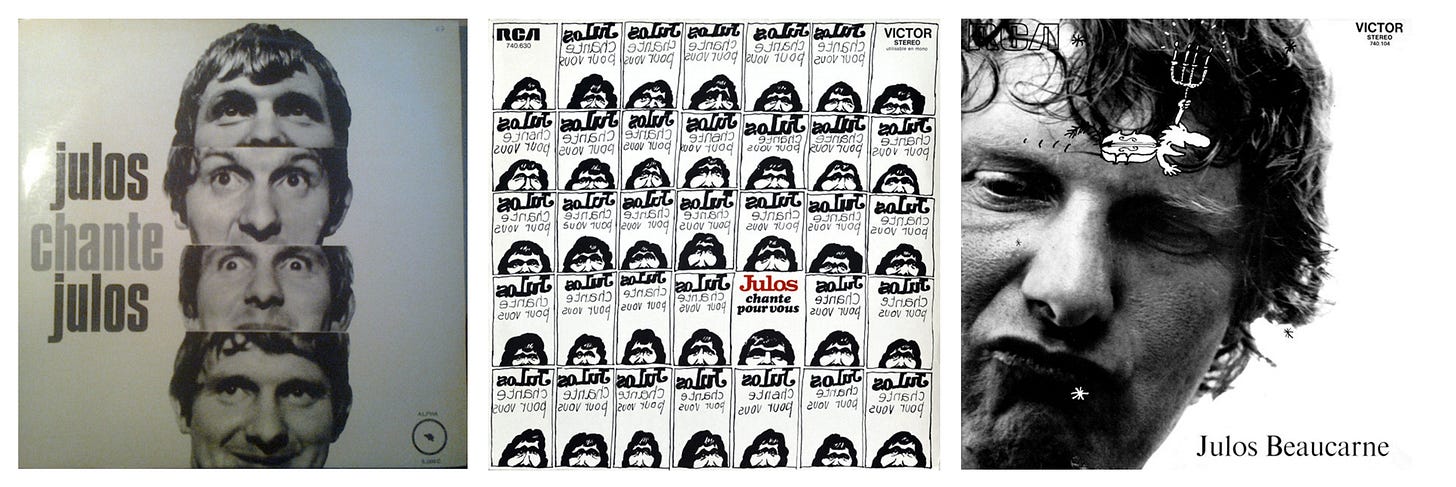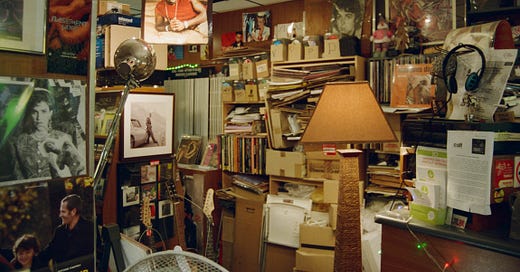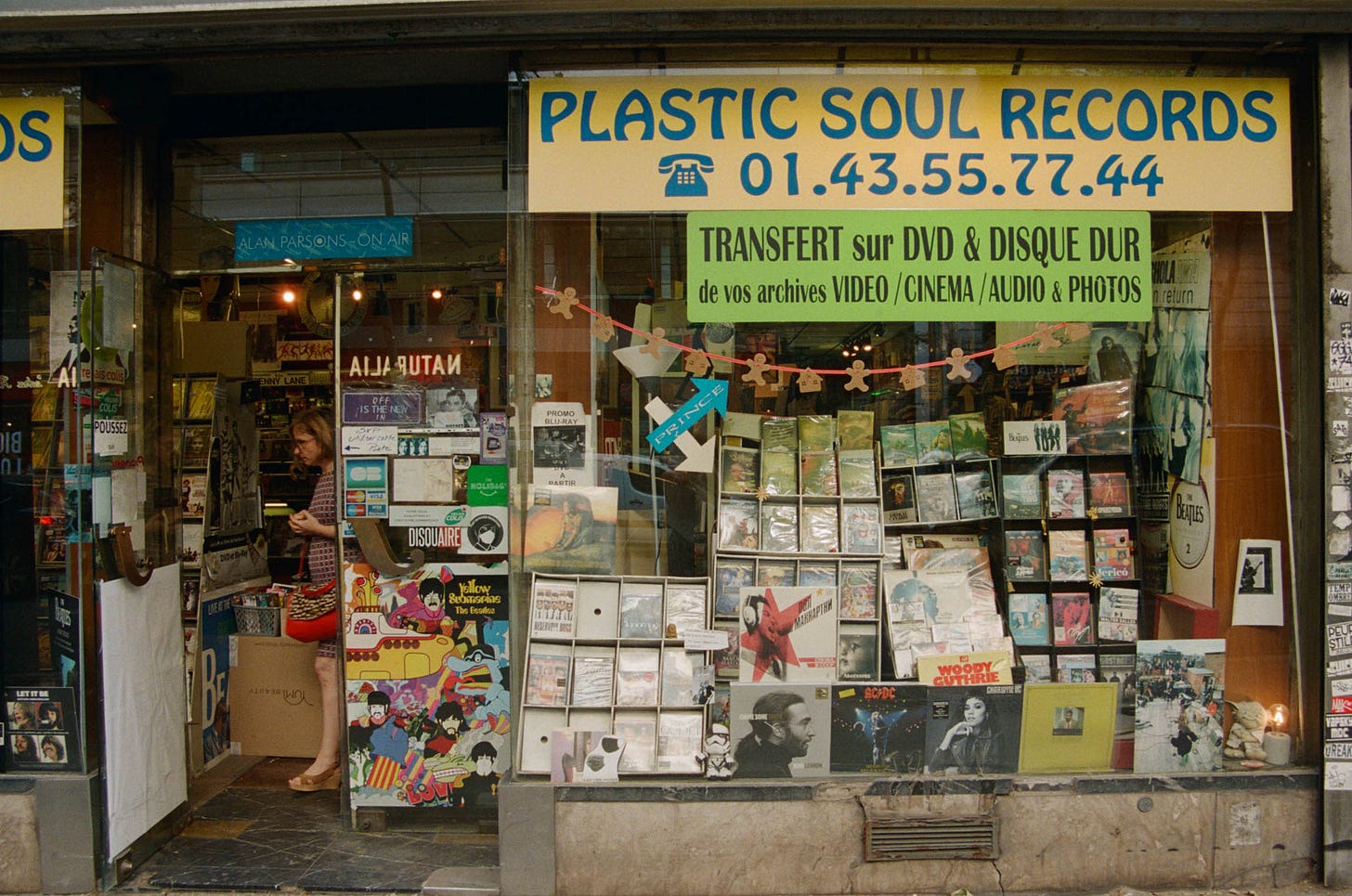The "Je Ne Sais Quoi" of French Album Art
Exploring how the style of French New Wave influenced more than just films
Ahead of my trip to Paris, I dreamed of scouring bins upon bins of original pressings of classic French records, from Yé-Yé to Chanson. I researched the best record shops to visit in the city and added CROCODISC, in the Latin Quarter, and Le Silence de la Rue, near The Bastille, to my list. Repeating my poorly rehearsed French in my head, I began my hunt at CROCODISC on Rue des Écoles, only to find one row labeled Francophone, overpowered by bins of British and American imports.
Looking back now on the history of Yé-Yé and its roots in British and American rock, the overflow makes complete sense, but in the moment, I hid the confusion on my already obvious American face. I began flipping through, and despite the small selection and my imperfect French, I walked away with Régine’s 1967 eponymous debut album and France Gall’s also eponymous 1975 LP. Régine had passed just 3 weeks earlier, on May 1st, at the age of 92. Born in Belgium in 1929 to Jewish Polish parents, she escaped the Nazis in war-torn France and went on to become the inventor of the discothèque, all before releasing her first album. Her early album art embodies quintessential French New Wave aesthetics, with high-contrast black and white imagery accompanied by loud typography.

While the French New Wave movement began in cinema, with directors like Jean-Luc Godard, Agnès Varda, Eric Rohmer, and François Truffaut, its style informed the aesthetics of French culture, from music to fashion, through the 50s and 60s.
After leaving CROCODISC, where the owners insisted their small but rich, collection, was the best in Paris, I attempted to find a larger troth at Le Silence de la Rue, which, I quickly realized upon entering was a dead end, carrying all reissued vinyl. Thankfully I had already stumbled across La cuve à son, on Rue Traversière. Translated to “The Sound Tank” in English, the small shop was decorated like a teenager’s bedroom, with flags, pictures, books, and posters covering the walls and ceiling. I walked away with two 7-inches, including Françoise Hardy’s 1967 Des Ronds Dans L'eau.

A pop icon and actress in her own right, Hardy’s music, and image are highly associated with the aforementioned Yé-Yé sound, which found its roots in early British and American Rock n’ Roll, specifically from the “yeah! yeah!” sung by bands such as The Beatles. Along with Serge Gainsbourg and Sylvie Vartan, Hardy popularized the counterculture movement in France. Her album covers, like Régine’s, evoke that same cinematic quality influenced by the French New Wave, but with a pop of color.
My search for the ultimate French vinyl ended at Plastic Soul, another happy surprise, which happened to be the oldest record shop in Paris, according to the welcoming shop attendant. It was the epitome of the treasure trove I had been imagining. While the Francophone section was still one, yet very long, row, the history of its cultural influences (the attendant also said they put Paris onto the one and only Mariah Carey) was very present in the dust and knick-knacks that surrounded the records.
I flipped through the racks to find the ultimate 70’s orange cover of Marie Laforêt Vol. VII and the illustrated film-still-like art of Julos Chante Pour Vous. While artist Julos Beaucarne was Belgian, the influence of the French New Wave is not lost on his album art. His covers give off the playful charm that was also a key part of the movement.

I left Plastic Soul Records, and Paris, with an understanding that I wouldn’t come across the plethora I had dreamed of. Not because it didn’t exist, but because while the French may stereotypically stick their noses up at Americans, when it comes to music, their appreciation is not lost on the foreign influence. To enter a French record store is to enter a global commerce. But to purchase a French album is to immerse yourself in a quintessentially cinematic landscape.
The Art of Cover Art is a free, educational, and inspirational resource. If you have $5/ month to spare it would be really helpful in furthering my research. Or, if you think a friend might enjoy this newsletter, the best way to pay it forward is by sharing!







Fantastic piece. Really admire and enjoy your Substack body of work. Always interesting. Lots of new outright to be exposed to and lots of interesting and fresh takes on what is familiar. Early Gen Xer era here.
Album art has moved me since I was a young child listening to my parent’s vastly different LP record collections sitting in front of an old but glorious Magnavox Astrosonic console… and following me into my own voracious collecting…repeatedly pondering & absorbing the images, artwork and designs… subconsciously filing away the different “movements” & “moments” and trends stylistically. The music represented within its visual heritage.
Your work invokes lots of connection to “long ago” and its ever-evolving path to now. TY :)